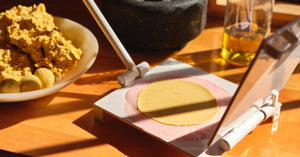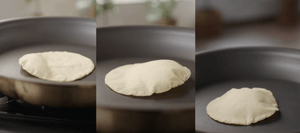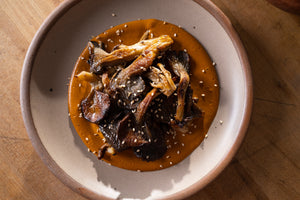Masa Shapes: Pozole
Masa Shapes: Pozole

December 9, 2020
I don't know about you, but we here at Masienda HQ have been waking up to some mighty chilly days. OK, OK, chilly for Los Angeles! Though winter doesn't officially start for a few more weeks, we're deep in pozole mode right now, nonetheless.
Pozole is both a comforting dish and one to mark celebratory occasions, like Christmas and New Year's Eve. Truth be told, we're spooning the stuff all year round.
The word "pozole" refers to both a stew containing nixtamalized corn as well as the nixtamalized corn kernels (within the stew) themselves. In addition to its better-known cameos in soups and stews, however, pozole can be treated much like a pasta, as done with pozole seco from Colima; it can even be fried, like pozole frito, where it's tossed, stir-fry style, in a pan with a protein of some kind.
Some form of pozole can be found well across the Americas. You may have heard of hominy in the US or mote in South America--it's all the same delicious stuff.
Fun fact: In the olden days, pozole preparation was closely tied to the ritual human sacrifices in Mesoamerican culture. Whereas, today, braised pork is the most commonly applied protein, let's just say that, back then, the name of the protein rhymed closely with cumin. You picking up what I'm putting down?
So, why do we classify pozole, which is essentially nixtamalized corn, as a "masa shape"? Here, at Masienda, we refer to pozole as "masa in development" because the kernels, which have undergone nixtamalization***, are technically just one grind away from becoming proper masa (especially if you're using a variety like bolita blanco, which makes excellent masa AND pozole). For this reason, pozole might just be the easiest way to test the masa waters at home, once and for all--and no molino is required!
In this second installment of our Masa Shapes series, we take you through the entire pozole-making process in under two minutes. If you are hoping to follow along at home, we have a special pozole starter kit with your name on it. The kit features the incomparable cacahuazintle corn varietal, which is the most prized pozolero, or corn for pozole, found in Mexico. It also comes with a starter bag of cal and our self-published Nixtamal book (optional), which includes a bonus pozole recipe from our friend, Master Chef Rick Bayless.
As always, let us know if you have any questions along the way. We're standing by at [email protected] for any masa preparation questions or thoughts you might have.
***In case you're just joining the masa movement, nixtamalization (nix-ta-ma-li-za-tion) is the ancient, Mesoamerican process of steeping corn kernels with an alkaline ingredient (e.g., slaked lime, ash, etc.). This process softens the corn, imparts calcium and activates the essential amino acids and vitamin B3 found naturally in each kernel. Pretty incredible stuff and worth trying out, yourself, if you ask us. For helpful, easy-to-follow tips on nixtamalization and masa preparation, check out Nixtamal: A guide to masa production in the United States.


